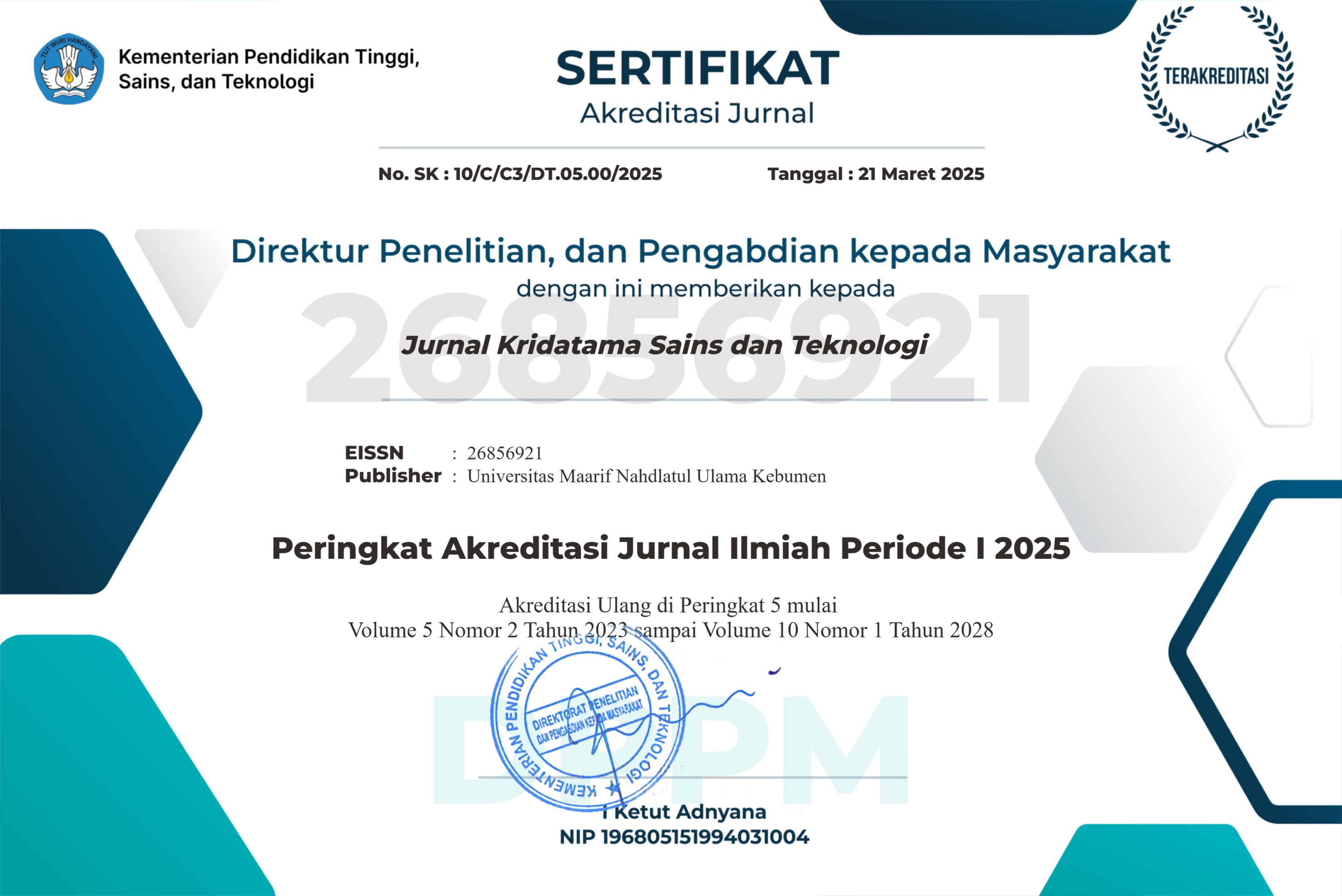Sistem Kontrol PID pada Shaking table Berdasarkan Percepatan Gempa Bumi Berbasis LABVIEW
DOI:
https://doi.org/10.53863/kst.v7i01.1665Keywords:
Eartquake, Shaking table, Building replica, PID Control, LabVIEWAbstract
Earthquakes are natural disasters that can cause significant damage to buildings, necessitating an analysis of structural dynamic responses to seismic loads using a shaking table controlled by a Proportional-Integral-Derivative (PID) system based on LabVIEW. The system is designed to accurately reproduce ground motion using digital earthquake acceleration data and was tested through simulation and direct implementation with a 12 kg load. The PID tuning process employed a trial-and-error method, yielding optimal parameters of Kc = 4.5, Ti = 0.0001, and Td = 0.002. Test results demonstrated that the PID controller outperformed the Proportional (P) controller, achieving a significantly lower steady-state (0.000058 vs. 0.012745) and smaller overshoot while closely tracking the earthquake input signal. Through the integration of hardware and LabVIEW software, the system exhibited strong potential for laboratory-scale earthquake simulation and serves as a valuable tool for education and research in civil engineering and control systems
References
table Berbasis LabVIEW untuk Simulasi Data Gempa," Jurnal Teknologi dan Sistem Komputer, vol. 9, no. 2, pp. 123130
A. Travis. 2006. LabVIEW for Everyone: Graphical Programming Made Easy and Fun, 3rd ed., Prentice Hall.
A. Visioli. 2006. Practical PID Control, Springer-Verlag London.
B. C. Kuo. 2014. Automatic Control Systems, 9th ed., John Wiley & Sons.
B. Salman. 2023. "Sistem Kontrol pada Shaking table Menggunakan Input Data Gempa untuk Pengujian Replika Bangunan Berbasis LabVIEW," Skripsi, Program Studi Teknik Elektro, Politeknik Negeri Jakarta.
D. Kurniawan, L. S. Nugroho, dan Y. Rahayu. 2019. "Evaluasi Sistem Kendali PID pada Simulasi Dinamik Menggunakan NI-LabVIEW," Seminar Nasional Teknik Elektro (SENTRA), Universitas Negeri Yogyakarta.
Erwani Merry Sartika, Cindrawati Lesmana, Novia Theresia Br. Pasaribu, dkk. 2024. "Perancangan Alat Getar melalui Pemanfaatan Motor AC sebagai Mekanisme Getar", Jurnal Teknik Elektro Universitas Kristen Maranatha.
G. F. Franklin, J. D. Powell, and A. Emami-Naeini. 2015. Feedback Control of Dynamic Systems, 7th ed., Pearson.
Hany Ferdinando, Desain PID Controller dengan Software MatLab, Jurnal Teknik Elektro Petra, 3(1), pp. 14-20, 2015.
Y. Z. M. Htet, M. H. Aung, & Q. Etaix, Development of a shaking table for educational purposes, Worcester Polytechnic Institute, n.d.
J. J. Kahfi. 2023. "Shaking table Menggunakan Input Data Gempa dan Gelombang Sinus untuk Pengujian Replika Bangunan Berbasis LabVIEW," Skripsi, Program Studi Teknik Elektro, Politeknik Negeri Jakarta.
K. Ogata. 2010. Modern Control Engineering, 5th ed., Prentice Hall, pp. 123145.
S.-K. Lee, E. C. Park, K.-W. Min, & J.-H. Park. 2007. Real-time substructuring technique for the shaking table test of upper substructures, Engineering Structures, 29(10), pp. 22192232.
MathWorks, PID Controller Tuning, [Online]. Available:
https://www.mathworks.com/help/control/ug/pid-controller.html. Accessed: 16-Jun-2025.
N. S. Nise, Control Systems Engineering, 6th ed., John Wiley & Sons, 2011.
Downloads
Published
How to Cite
Issue
Section
License
Copyright (c) 2025 Hariyanto Hariyanto, Adil Mustaghfir, Fatih Rizqi Santoso

This work is licensed under a Creative Commons Attribution-ShareAlike 4.0 International License.
Authors retain copyright and grant the journal right of first publication with the work simultaneously licensed under a Creative Commons Attribution-ShareAlike 4.0 International License that allows others to share the work with an acknowledgment of the work’s authorship and initial publication in this journal

















